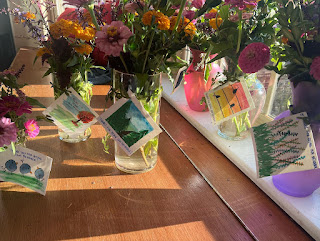Saying Hello to a Neighbor Improves Your Health
Now a Gallup study shows that American adults who regularly say hello to more than one person in their neighborhood have better well-being than those who say hello to fewer neighbors or none.
Americans’ well-being score increases steadily by the number of neighbors greeted, from 51.5 among those saying hello to zero neighbors to 64.1 for those greeting six neighbors. No meaningful increase in well-being is seen for additional neighbors greeted beyond six.
These results were collected from the Gallup National Health and Well-Being Index. The index is calculated on a scale of zero to 100, where zero represents the lowest possible well-being and 100 represents the highest possible well-being. The well-being metrics include:
- Career wellbeing: You like what you do every day.
- Social wellbeing: You have meaningful friendships in your life.
- Financial wellbeing: You manage your money well.
- Physical wellbeing: You have energy to get things done.
- Community wellbeing: You like where you live.
These findings, from a poll conducted May 30-June 6, 2023, are based on 4,556 U.S. adults surveyed by web as part of the Gallup Panel, a probability-based panel of about 100,000 adults across all 50 states and the District of Columbia.
How frequently an American adult says hello to their neighbors varied “substantially” by age.
On average, American adults reported greeting five neighbors, with 27 percent reporting greeting six or more. According to the poll, adults under 30 say hello to an average of 2.9 neighbors, while older adults, 65 and up, greet an average of 6.5 neighbors. About 14 percent of young adults, those under 30, greet six or more neighbors, compared to 41 percent of adults 65 and older.
Not only is a person's overall Well-Being Index score closely related to the number of neighbors they regularly greet, but the pattern is also seen across all five elements of the index
Having children under the age of 18 at home marginally increases a U.S. adults’ chances of greeting neighbors, as does having an annual household income of $120,000 or more, according to Gallup.
Knowing how many neighbors someone greets on a routine basis is a useful marker of their personal wellbeing.
###
Does this article make you interested in taking the Engaged Neighbor pledge? Five categories and 20 principles to guide you toward becoming an engaged neighbor. Sign the pledge online at http://engagedneighbor.com.
Contact the blog author, David L. Burton at dburton541@yahoo.com.





Comments
Post a Comment